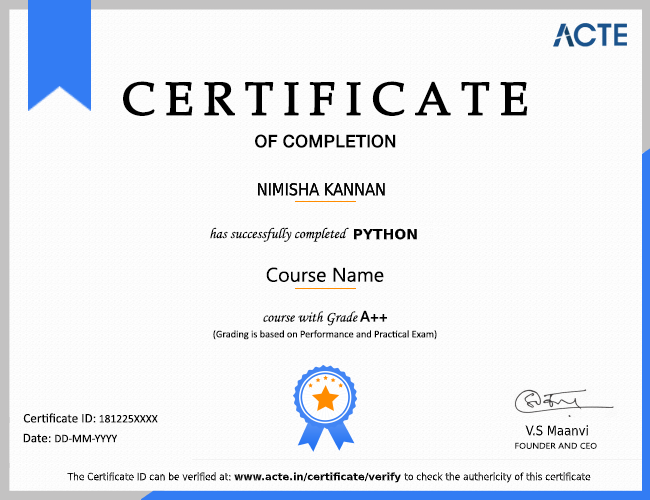Introduction to Apache Ambari
Our Apache Ambari will assist you in managing Hadoop. We offer the most comprehensive online training for deploying, maintaining, monitoring, and deploying Hadoop clusters, as well as optimizing Hadoop operations and increasing the ecosystem, security, and Hadoop support. Possibilities to work on real-world projects. It has a highly dynamic dashboard that allows managers to see the progress and status of each Hadoop cluster application. Its user interface is flexible and scalable, allowing a variety of tools including Pig, MapReduce, Hive, and others to be installed on the cluster and managed in a user-friendly manner.
Preconfigured operational indicators provide instant insight into the health of the Hadoop cluster. An easy step-by-step installation tutorial is included in the user-friendly configuration.
Hortonworks Data Platform Allows for Apache Ambari Installation (HDP) :
Authentication, authorization, and auditing are all handled by the institution. Analytics combines theory and practice to find and communicate data-driven insights that help managers, stakeholders, and other executives make better decisions in their organizations. Experienced data analysts think about their work in a larger context, both within their company and light of external variables. Analysts can also account for the competitive environment.
Apache Ambari Certification Training :
There will be tests after this training session that exactly matches the kind of questions given in the respective certification examinations and will help you score higher. After completing the Apache Ambari Certification Course project work (after expert evaluation) and achieving at least 60% on the quiz, you will get a Course Completion Certificate. ACTE accreditation is widely accepted by top 80+ multinational corporations such as Ericsson, Cisco, Cognizant, Sony, Mu Sigma, Saint-Gobain, Standard Chartered, TCS, Genpact, Hexaware, etc.
Features of Apache Ambari :
Platform Independent :
Apache Ambari is a cross-platform application that operates on Windows, Mac OS X, and a variety of other operating systems. It is built to support any hardware or software system. Ubuntu, SLES, RHEL, and other Linux distributions run Ambari. Yum, RPM packages, and Debian packages are examples of platform-dependent components that should use well-defined interfaces.
Pluggable Component :
Pluggable components should encapsulate any specialized tools and technologies. Inter-component standard is not part of the pluggability goal.
Version Management and Upgrade :
Ambari keeps track of its own versions, so there's no need for third-party tools like Git. Any Ambari application may be upgraded fairly easily.
Extensibility :
By simply adding various view components, you can increase the functionality of current Ambari applications.
- Operational Metrics Configured Beforehand :
In Ambari there are pre-configured operational measures, using which it takes a look at the health of the Hadoop cluster instantaneously.
- Configuring User-Friendly :
Thanks to its user-friendly setup, step-by-step instruction for installation is available.
- Authentication :
Ambari provides authentication, authorization, and auditing by deploying Hadoop clusters based in Kerberos.
- Monitoring :
Dependencies and performances are monitored by viewing and analyzing jobs and tasks.
- Security :
Ambari can synchronize the active directory with LDAP, and also has solid security. So it's all in the features of Apache Ambari. Hope you want our explanation, Independent Apache Platform Ambari supports all hardware and software systems architecturally and is available on Windows, Mac, and other platforms, particularly if Ambari is running Ubuntu, SLES, RHEL, etc. In addition, platform-dependent components should be plugged into well-defined interfaces such as yum, rpm packages, and Debian packages.
- Component Pluggable :
Any current Ambari application can be easily customized. In general, plug-in components must be around every tool as well as technology. Make sure that the objective of the pluggability is not within the intercomponent standards.
Upgrade and Version Management It requires no other tools such as Git while maintaining versions in Ambari. In addition, we can say both Ambari and its applications are straightforward to upgrade.
- Recovery for Failure :
Let's say that something incorrect happens while we interact with an Ambari application to grasp the Ambari failure recovery idea. And the system has to recover gracefully at this moment. This is the case with Ambari. See it like that, too, If we worked on the word file and suddenly there is a power break, we will receive a self-saving version of the document with MS Word after switching on the system, which is the same as the Ambari failure recovery concept.
Benefits of Using Apache Ambari :
This is about the Hortonworks Data Platform (HDP). Ambari replaces the manual duties that used to be required to monitor Hadoop operations. It provides a straightforward and secure platform for setting up, administering, and monitoring HDP deployments. Ambari is a user-friendly Hadoop management UI that is backed up by REST APIs. Below are some of the advantages of utilizing Apache Ambari.
Hadoop cluster installation, configuration, and management simplified :
Clusters of Hadoop at a large scale. Its wizard-driven methodology allows the configuration to be automated according to the environment, resulting in optimal performance. The task of setting services is split between the master-slave and client components. It's also used to set up the cluster, start it up, and test it. Those who prefer a hands-on approach can benefit from configuration blueprints. It's possible to save the blueprint for an ideal cluster. It's easy to see how it's provided. This is then utilized to create subsequent clusters without requiring any user intervention. Blueprints also help to retain and ensure the use of best practices in a variety of settings.
Centralized security and application :
Ambari, one of the Hadoop ecosystem's components, drastically reduces the complexity of cluster security configuration and administration. Advanced security constructions like Kerberos and Ranger can also be set up automatically with the help of the tool.
Complete visibility to your cluster’s health :
You can use this tool to keep track of the health and availability of your cluster. A web-based dashboard with metrics for each service in the cluster, such as HDFS, YARN, and HBase, may be readily configured. For troubleshooting and analysis, the application also assists in gathering and visualizing crucial operating parameters. Ambari creates warnings that are pre-programmed and integrated with the existing system.
Metrics visualization and dashboarding :
It gives Hadoop component metrics a scalable, low-latency storage system. Selecting Hadoop metrics that are genuinely important necessitates a high level of experience and knowledge of how the various components interact. Grafana is a popular graph and dashboard maker that makes analyzing metrics a breeze. This, along with HDP, is included with Ambari Metrics.
Extensibility and customization :
In his or her enterprise setup, Ambari allows a developer to work on Hadoop gracefully. Ambari makes use of a broad imaginative community to develop the tool while also removing vendor lock-in. REST APIs, in combination with Ambari Stacks and Views, give HDP implementations a lot of flexibility. Ambari Stacks is a wrapper for the life cycle control layer, which is used to streamline processes across several services. Ambari utilizes a consistent way to handle many sorts of services, such as install, start, configure, status, and stop. Stacks technology rationalizes the cluster install experience across a collection of services when provisioning. For operators, this is a natural extension point.
Applications of Apache Ambari Core :
- Ambari Server
- Ambari Agent
- Ambari Web UI
- Database
1. Ambari Server :
Ambari Server is the master server's entry point for all administrative functions. It's a shell script, after all. This script uses Python code, ambari-server.py, internally and sends all requests to it.
When different parameters are supplied to the Ambari Server software, a number of entry points become accessible. Daemon administration, software upgrading, and software setup are the three.
2. Ambari Agent :
The Ambari Agent is installed on all of the nodes you want to manage using Ambari. This program sends heartbeats to the master node on a regular basis. Ambari Server uses Ambari Agent to perform a variety of operations on the servers.
3. Ambari's graphical user interface :
Ambari Web UI is one of Apache Ambari's most powerful capabilities. The web application is deployed using the Ambari program's server, which is located on the most.
4. Database :
Multiple RDBMS (Relational Database Management Systems) are supported by Ambari to keep track of the state of the Hadoop infrastructure. During Ambari's installation, you can select the database you want to utilize. At the time of writing, Ambari worked with the following databases :
- Oracle MySQL, MariaDB, or PostgreSQL Embedded PostgreSQL
- SQL Anywhere by Microsoft SQL Server
- Berkeley DB is a database management system.
Scope of Apache Ambari :
Among the existing Big Data tools, Apache Ambari has exploded in popularity during the last year.. Larger corporations are increasingly turning to this technology to better manage their massive clusters, causing it to explode in popularity. Hortonworks and other Big Data entrepreneurs are working on Ambari to make it more scalable so that it can serve more than 2,000 or 3,000 nodes at once. Hortonworks has introduced Ambari 2.4, which aims to simplify Hadoop clusters by lowering troubleshooting time, boosting operational efficiency, increasing visibility, and so on.
Apache Ambari Roles and Access Understanding :
The access levels allow administrators, depending on the authorization, to categorize cluster users and groups.
Access levels are the basis of the following positions. Access levels improve the granularity of authorizations for users and groups of Ambari:
- User Cluster :
The user allocated to the role of the cluster user can examine the cluster information and its services, including configurations, state of service, and health warnings. This user was known as the read-only user in Ambari 2.2 and prior. The cluster user is actually a viewer only.
- Operator Service :
Controlling over life-cycles including starting and terminating services, carrying out service checks, and carrying out services-specific duties such as HDFS rebalancing and renewing the YARN Capacity Scheduler is the function of the service carrier users.
- Administrator of Services :
The Service Administrator assigned users to have the same authorization, but have the added configurability, as users assigned to a Service Operator position. This involves managing settings groups, moving service masters, and activating HA.
- Operator Cluster :
Users assigned to the Cylinder Operator job are authorized to conduct the same host-level actions, including the addition and removal of hosts and component(s), as are the users assigned to the Service Manager role. Users allocated to the job of cluster administrators are in the hands of the cluster administrators, their hosts, and services. They have control. The user was referred to as the operator user in Ambari 2.2 and before.
- Ambari Manager Ambari :
All parts of Ambari are fully controlled by the Ambari administrator users. This supports creating clusters, changing cluster names, registering new software versions, and fully controlling all managed clusters.
Who should learn Apache Ambari?
- Hadoop Administrators
- Database Professionals
- Mainframe and Hadoop Testing Professionals
- DevOps Professionals
What role will Apache Ambari play in your professional development?
With the growing popularity of Big Data and Analytics, workers with a strong understanding of Ambari or comparable technologies have a better chance of landing lucrative jobs in this field. The percentage of employment available every day for professionals in this technology has increased dynamically, as can be seen in the graph below.
































